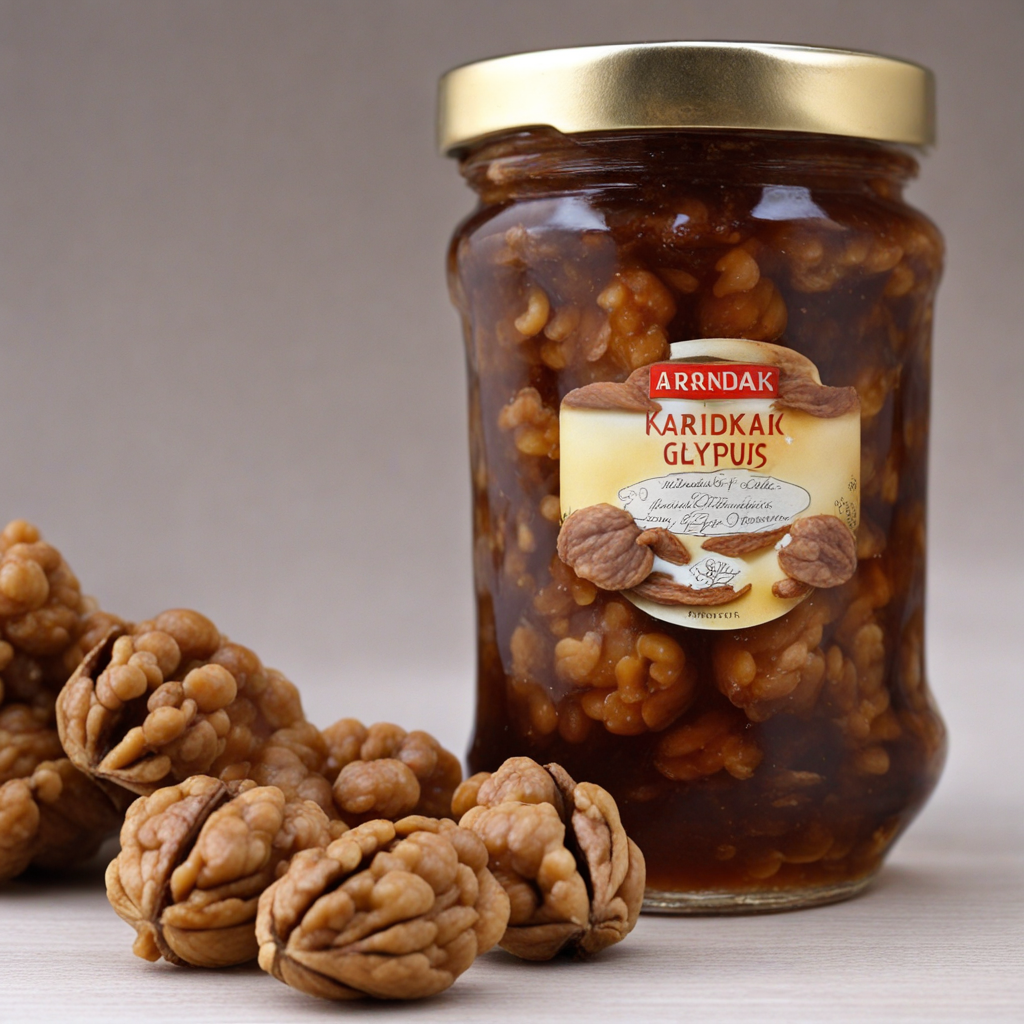Loukoumi
Loukoumi is a delightful confectionery from Cyprus, often referred to as Turkish delight in other regions, but with its unique Cypriot twist. This sweet treat is typically made from a base of sugar, cornstarch, and water, cooked until it reaches a gel-like consistency. Once cooled, it is cut into small cubes and generously dusted with powdered sugar or cornstarch to prevent sticking. The texture is uniquely chewy and slightly firm, providing a satisfying bite that melts in your mouth, making it an irresistible snack or dessert. The flavor profiles of Loukoumi are diverse, with the classic version often infused with rosewater, giving it a fragrant floral aroma that enchants the senses. Other popular flavors include citrusy lemon, zesty orange, and even exotic options such as pomegranate or almond. Each variety offers a different taste experience, showcasing the rich agricultural heritage of Cyprus and its penchant for using natural ingredients. The sweetness is balanced, not overwhelming, making it a perfect accompaniment to a cup of strong coffee or tea. Loukoumi is not just a treat; it is also a cultural symbol in Cyprus, often gifted during celebrations and special occasions. Enjoying Loukoumi can be a communal experience, as it is commonly shared among friends and family, embodying warmth and hospitality. Whether you savor it plain or with a sprinkle of nuts, Loukoumi invites you to explore the sweet side of Cypriot cuisine and immerse yourself in a tradition that has been cherished for generations.
How It Became This Dish
The Sweet Journey of Λουκούμι: A Culinary Treasure of Cyprus Origins: A Fusion of Cultures Λουκούμι, commonly known as Turkish delight in English, is a sweet confection that holds a special place in the culinary heritage of Cyprus. Its origins can be traced back to the Middle East, with the earliest records of similar sweets appearing in the Ottoman Empire during the 15th century. The word “λουκούμι” itself is derived from the Arabic word “luqma,” meaning “bite,” reflecting the treat’s small, cubed shape. While its roots are deeply embedded in the Ottoman culinary tradition, flavors and ingredients have evolved through regional adaptations. Cyprus, with its rich history of diverse cultures, has embraced and transformed this sweet into a beloved national delicacy. Influences from Greek, Turkish, and Middle Eastern cuisines have melded to create a unique version of Λουκούμι that reflects the island's multicultural identity. Cultural Significance: A Sweet Symbol of Hospitality In Cypriot culture, Λουκούμι is more than just a dessert; it symbolizes hospitality and generosity. Offering a piece of this sweet to guests is a customary gesture, often accompanied by a cup of coffee or tea. This tradition is rooted in the island’s rich social fabric, where sharing food is a way to foster connections and express goodwill. Λουκούμι is commonly served during special occasions, such as weddings, religious celebrations, and family gatherings. It is a staple at various festivities, including the local celebration of “Αγιοι Αναργυροι,” where it is distributed as a symbol of good fortune and health. The treat is often associated with the idea of sweetness in life, serving as a reminder of the joy and warmth shared among friends and family. Crafting the Delight: Ingredients and Techniques The primary ingredients of Λουκούμι are sugar, cornstarch, water, and a variety of flavorings, such as rosewater, mastic, citrus, or nuts. The traditional method of preparation involves boiling sugar and water to create a syrup, which is then combined with cornstarch to form a thick mixture. This mixture is cooked until it reaches a gelatinous consistency before being poured into molds to set. Once cooled, it is cut into cubes and dusted with powdered sugar or cornstarch to prevent sticking. The flavors of Λουκούμι are as diverse as the cultures that have embraced it. In Cyprus, popular variations include rose, lemon, and the unique flavor of mastic, a resin obtained from the mastic tree that grows on the island. Mastic has been used in Cypriot cuisine for centuries and is celebrated for its distinctive aromatic qualities. This local ingredient not only enhances the flavor of Λουκούμι but also ties the confection to the island’s agricultural heritage. A Sweet Evolution: Historical Development Over the centuries, Λουκούμι has undergone significant transformations. During the Ottoman period, the sweet became widely popular across the empire, with various regions developing their own versions. In Greece, for instance, it was often flavored with nuts and served during festive occasions, while in Turkey, it was characterized by its chewy texture and a wider array of flavorings. In Cyprus, the confectionery industry began to flourish in the late 19th and early 20th centuries. Traditional family recipes were passed down through generations, and small local businesses started to emerge, creating artisanal varieties of Λουκούμι. These shops became integral to community life, serving as gathering places where locals could enjoy their favorite sweets while socializing. The 20th century saw the introduction of modern production techniques, which allowed for the mass production of Λουκούμι. Despite these changes, many families continue to uphold traditional recipes, ensuring that the authentic flavors and textures of the sweet remain alive. Today, visitors to Cyprus can find both artisanal and commercially produced versions of Λουκούμι, each offering a unique taste of the island's culinary heritage. Contemporary Context: A Global Delicacy In recent years, Λουκούμι has gained international recognition, finding its way into markets around the world. It is often showcased as a specialty item in Mediterranean and Middle Eastern cuisine. As tourism to Cyprus has increased, so has the popularity of local products, including Λουκούμι. Tourists flock to local confectionery shops to purchase beautifully packaged boxes of this sweet, often as souvenirs to share with loved ones back home. Modern adaptations have also emerged, with innovative chefs experimenting with new flavors and presentations. Some contemporary versions of Λουκούμι incorporate exotic ingredients like matcha, chocolate, or even more adventurous flavor combinations, appealing to a global palate. Despite these innovations, the essence of traditional Λουκούμι remains, rooted in its cultural significance and historical legacy. The Sweet Legacy: Celebrating Λουκούμι Today Today, Λουκούμι stands as a testament to Cyprus's rich culinary heritage and the island’s ability to blend diverse influences into a unified cultural identity. It is celebrated not only for its delightful taste but also for the memories and connections it fosters among people. As a beloved symbol of hospitality, it continues to play a vital role in Cypriot life, bridging generations and cultures. In conclusion, the story of Λουκούμι is a sweet narrative that encapsulates the essence of Cyprus—a land where history, culture, and culinary traditions intertwine. From its origins in the Ottoman Empire to its status as a cherished national delight, Λουκούμι is a reminder of the power of food to connect people, celebrate life, and preserve heritage. Whether enjoyed in the company of friends or offered as a gesture of kindness, this simple confection carries with it the rich tapestry of Cypriot culture, making every bite a taste of history.
You may like
Discover local flavors from Cyprus







